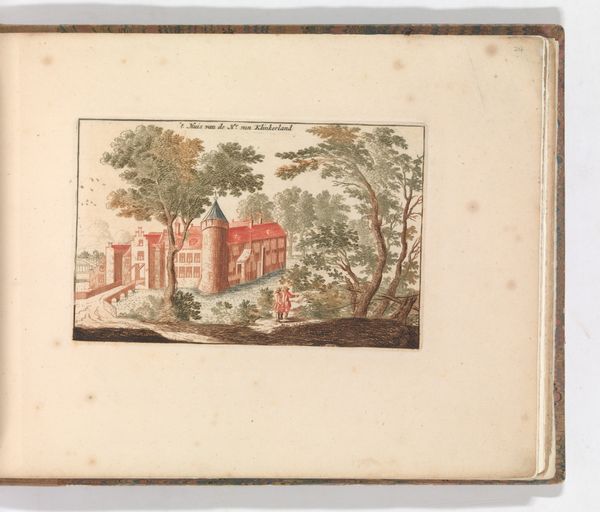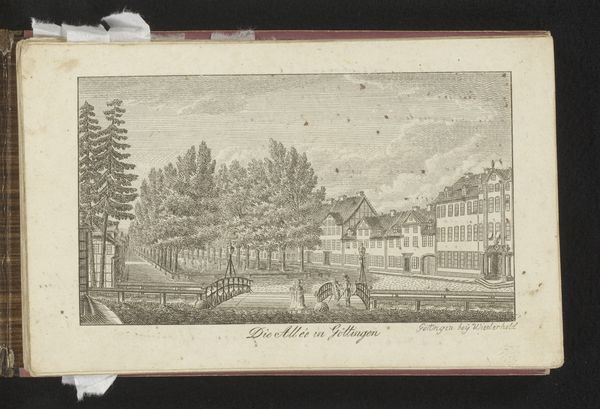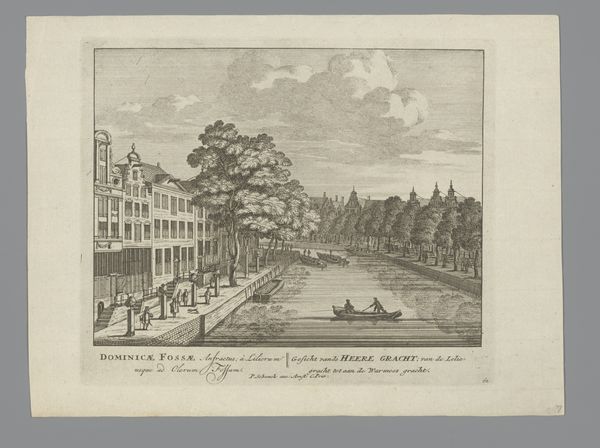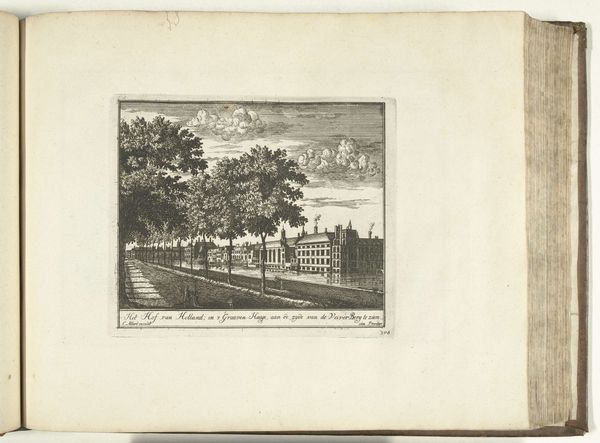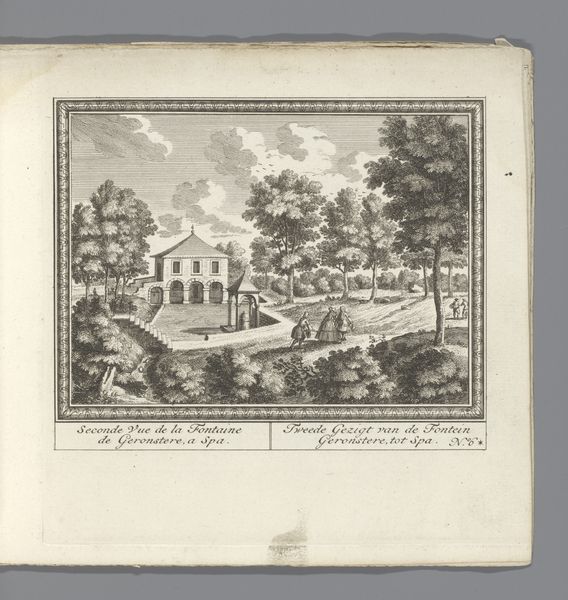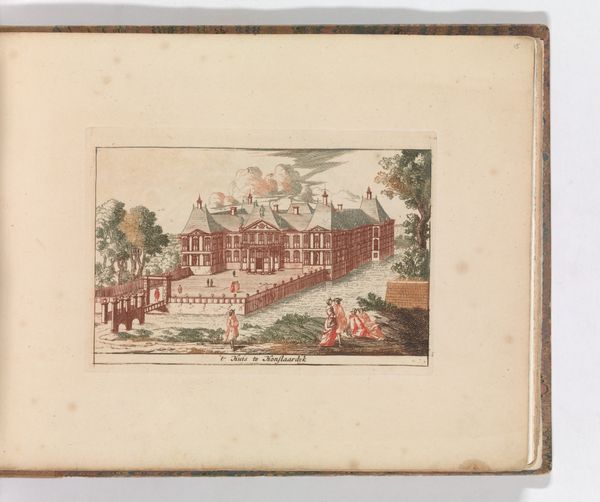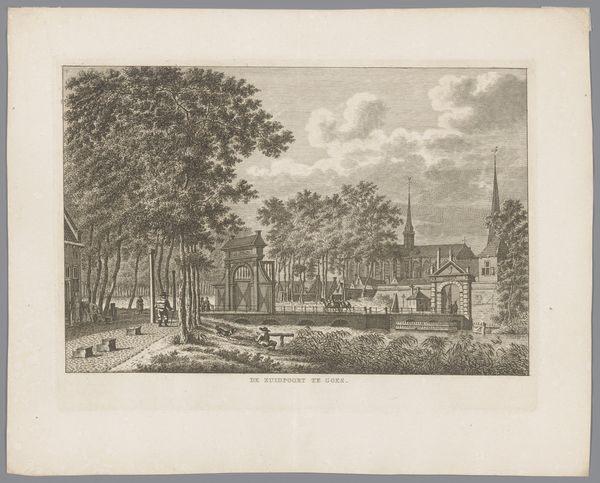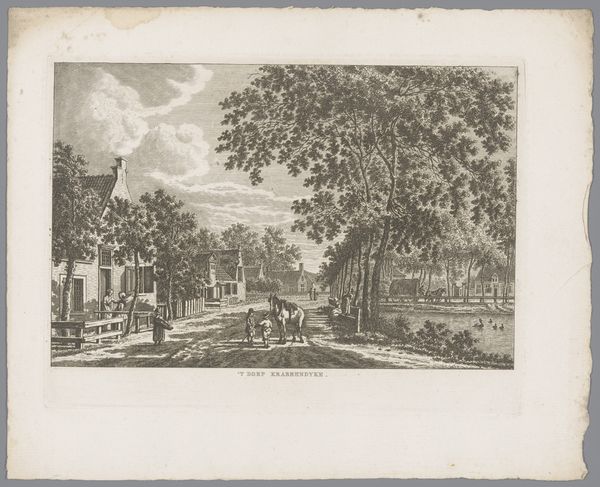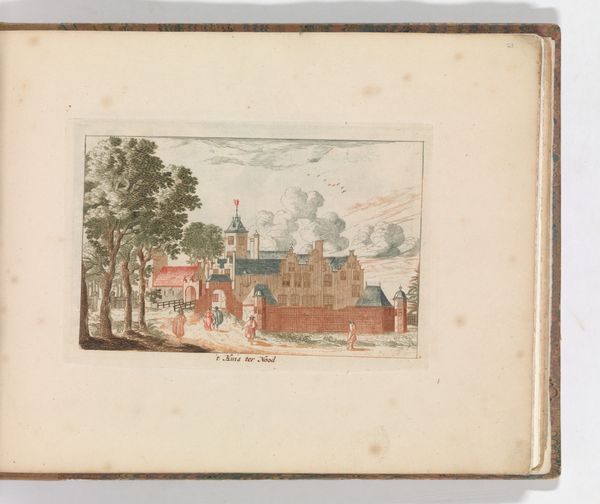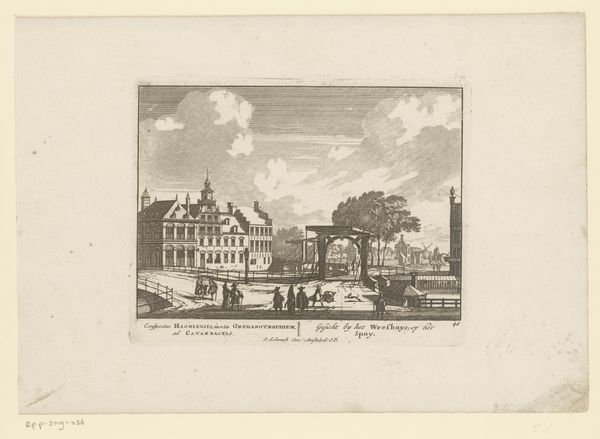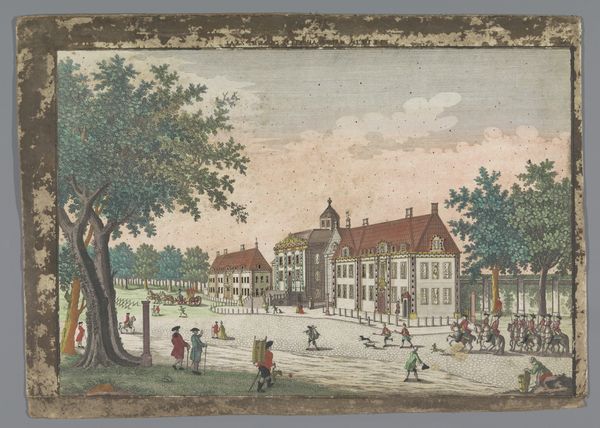
'Het Hof van Holland; in 's Graven-Hage, aan de zyde van de Veiver Berg te zien'', in: Tooneel Der Voornaamste Nederlands Huizen, En Lust Hoven, Naar T Leven Afgebeeld 1660 - 1693
0:00
0:00
drawing, print, watercolor
#
drawing
#
dutch-golden-age
# print
#
landscape
#
watercolor
#
cityscape
Dimensions: Plate: 6 5/8 × 8 in. (16.9 × 20.3 cm)
Copyright: Public Domain
Editor: This watercolor and print work, titled ''Het Hof van Holland; in 's Graven-Hage, aan de zyde van de Veiver Berg te zien'', created between 1660 and 1693 by Carel Allard, really strikes me with its sense of order. How do you interpret this work, especially within its historical context? Curator: This cityscape offers a glimpse into the Dutch Golden Age, a period defined not just by artistic achievement, but also significant socio-political shifts. What does it mean to depict the 'Hof van Holland,' the Court of Holland, in a time of burgeoning Dutch power, built on maritime trade and, undeniably, colonial exploitation? The apparent serenity hides complex layers of privilege and power. Editor: So, it’s not just a pretty picture; it's also a statement about Dutch identity and power structures at that time? Curator: Precisely. Look at the composition. The formal gardens, the grand buildings – they signify control, order, and prosperity, constructed, in part, on the backs of enslaved peoples. Consider, too, who this image was created for – the wealthy elite, who benefited most directly from the system. It serves to normalize and legitimize their dominance. Editor: I hadn’t considered the perspective of whose story is being told, and who benefits. Curator: Exactly! We can’t view this piece without acknowledging the realities of the Dutch Golden Age and the ethical considerations that history demands we confront. What is celebrated and who is excluded? These are critical questions. Editor: It's amazing how one image can contain such complex layers of meaning once you start digging beneath the surface. It encourages one to learn about the historic contexts more deeply. Curator: It certainly should! I believe understanding those underlying tensions can enrich our understanding and activate the narratives that works like these embody, acknowledging both the beauty and the complex histories embedded within.
Comments
No comments
Be the first to comment and join the conversation on the ultimate creative platform.

